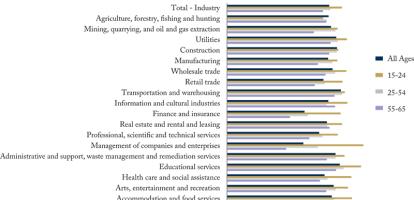In this edition of Graphic Intelligence, we profile the automation risk for almost 300 of Canada’s major occupations. In the chart below, each circle represents an occupation, sized by the number of Canadian jobs. The axis on the left represents the risk of automation.
You can choose an occupation from the drop-down menu below, or hover over a bubble in the chart itself.
Select Occupation:
Total Jobs: --
Risk of Automation: ----
Oops! If you are seeing this message, it may be because the chart is not displaying correctly. Try upgrading your browser or enabling Javascript.
Source: A. Jacobs, C.D. Howe Institute from Wyonch and Oschinski (2017).
The graphic shows that occupations high in abstract, complex-decision-making skills with a strong focus on creativity, critical thinking and interpersonal social skills have a relatively low risk of being automated. However, even occupations highly susceptible to automation (about 35 percent of Canadian jobs) are unlikely to be completely replaced by smart machines over the next few years.
But as the rate of technological progress increases and digitization permeates different occupations and industries, technical, job-specific skills might become obsolete relatively quickly. There is a need to increase opportunities for continuous education and lifelong learning.
To read more about how automation will impact Canadian industries, occupations, and workers, read, “Future Shock? The Impact of Automation on Canada’s Labour Market” by Matthias Oschinski and Rosalie Wyonch.




